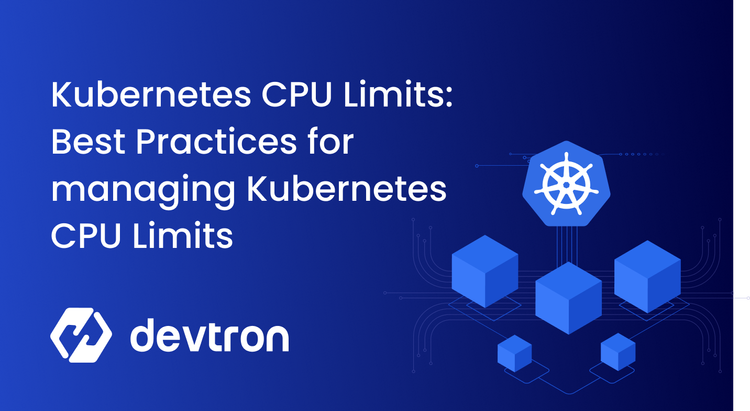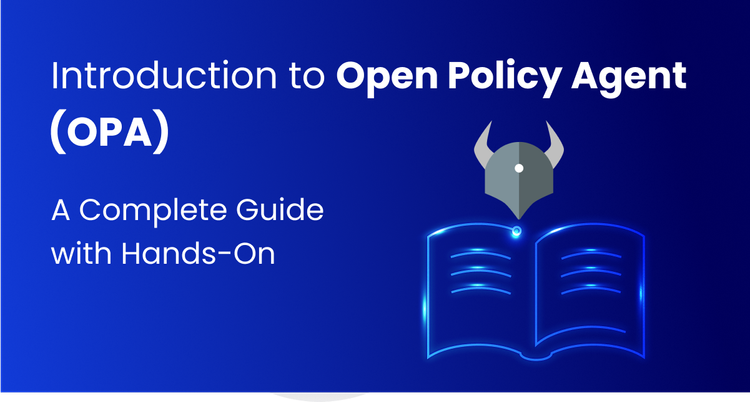Many organizations have spent many years building and refining their software delivery infrastructure within non-kubernetes environments. They might run their infrastructure on cloud-hosted VMs or bare metal servers using a virtualizing tool such as Proxmox. While these methods are useful and get the job done, they have limitations beyond a certain scale.
To address this scaling issue, companies want to move their workloads over to a Kubernetes environment. Apart from providing improved scalability, Kubernetes also provides a lot of other benefits such as automation, efficiency, auto-healing, and flexibility. However, migrating the entire business workload to Kubernetes is a daunting task, and it has several challenges associated with it.
In 2024, it would found in the State of Production Kubernetes survey that nearly 75% of responders use Kubernetes for running their production applications, leaving only 25% of respondents using traditional infrastructure such as VMs for their production applications.
Before we explore the challenges of adopting Kubernetes let’s understand what the adoption journey might look like.
Kubernetes Adoption Journey
Kubernetes adoption is one of the most difficult adoption that most of the organizations would go through. The journey of adopting Kubernetes is no less than a roller coaster ride. Even before you start with creating your very first Kubernetes cluster, you would need to make sure your application is containerized. And to containerize your application, you need to make sure the application is ready for containerization. It takes most organizations months or years to gain complete Kubernetes maturity, depending on multiple factors such as the size and scale of existing applications, technical expertise, existing infrastructure, and more. Let’s take a look at the 4 different stages that every organization would go through to achieve Kubernetes Maturity.
- Setting up Kubernetes: The first stage in any Kubernetes adoption journey is to create a Kubernetes cluster and get it ready for production deployments. You need to ensure that the cluster has the proper security and compliance before you start deploying your application to the cluster. All these tasks require Kubernetes expertise.
- Migrating Workloads: Making your application complaint to the Kubernetes environment and onboarding your first application can be cumbersome. Comparatively, migrating all applications might involve repetitive tasks and is a time-consuming activity. A process has to be created that can help you onboard applications quickly, without worrying about the configurations and writing helm-charts or K8s-manifests.
- Software Delivery Acceleration: There needs to be a proper process in place, which enables developers to accelerate their software delivery speed, while also ensuring that the proper compliance policies are being followed.
- Day 2 Operations: Once your applications are all deployed onto Kubernetes you would want to make sure that they are stable. This means ensuring that they can be updated to newer versions using deployment patterns such as blue-green or canary, without any significant downtime. This also involves getting visibility into the environments and checking if there are any resource constraints, ensuring dynamic resource scaling to meet workloads, etc.
Challenges with Getting Started
Within the entire Kubernetes adoption journey, there are multiple different challenges that organizations face. Let’s look at some of these challenges, and understand why migrating to Kubernetes takes a significant amount of time.
Steep Learning Curve
Kubernetes brings a lot of flexibility to the table, which enables developers and operations teams to have faster release cycles, while also ensuring maximum reliability. However, these advantages come with a lot of added complexity and nuances. In the pre-Kubernetes era, we were used to handling a lot of VM-level abstraction. This laid down a different foundation, mental model, and building model for the infrastructure components.
Understanding these models in a Kubernetes context is a challenge. Rather, it takes a lot of time to understand these nuances well. Even after understanding the Kubernetes nuances, developers lack the confidence needed to deploy their applications onto Kubernetes. You don’t want to take your applications to production if you can’t control your applications to the best of your ability, as it might affect the SLAs set in place. Within the State of Production Kubernetes 2024 report by Spectro cloud, 77% of respondents said that Kubernetes complexities have inhibited their adoption journey.
Before Kubernetes, developers had a very simple world, where they needed to know only a few technologies and develop software to solve the business concerns. They didn’t need to worry about different infrastructure components, and if the application’s design worked well with the existing infrastructure. Learning about Kubernetes for their application takes time, and it’s a new burden for the developers.
Containerization
Kubernetes by its very nature, is designed to run workloads as microservices. When migrating to Kubernetes, one of the first challenges you will be facing is containerizing your workloads. If you’ve previously run a monolithic application, i.e. every component bundled into a single large application, you will need to break these components down into smaller individual self-contained applications i.e. microservices to obtain the maximum benefit by shifting to a Kubernetes cluster.
Kubernetes is a container orchestrator, which means that to run your workloads, each application will need to be containerized. Learning how to create, build, and use a container image adds to its learning curve. Moreover, depending on your application’s tech stack, the configurations needed for creating a container image would vary.
Challenges with Tool Integrations
The cloud-native ecoystem is nothing less than a pacific ocean. The deeper you go, the more you are lost. There are hundereds and thousands of tools built for specific use-cases and the biggest problem is to integrate and manage the tools-sprawls.
Broad Ecosystem
Kubernetes has an extremely huge and extensive ecosystem. If you look at the CNCF ecosystem, there are 100+ different tools, all solving different problems. To make your cluster production ready, it is necessary to integrate these tools within your clusters. However, just the huge number of solutions for every category can be overwhelming. You have to evaluate the tools and select the ones that fit your needs.
Even after you’ve evaluated the tools, and shortlisted a small number of tools that meet your requirements, there still is the question of how you are going to integrate these tools within your cluster. Some of the tools are straightforward to integrate, but many require a lot of additional configuration which adds a cognitive burden and introduces a learning curve for developers.
While having the choice to pick your tools offers quite a lot of flexibility, 48% of survey respondents state that it is very difficult to choose the right tools form the broad ecosystem.
Multi-cluster & Multi-cloud Strategy
A lot of different organizations try to adopt a multi-cluster or multi-cloud strategy for their workloads i.e. spreading their workloads across multiple Kubernetes clusters or multiple different cloud providers. There is also an increasing demand for adopting a Hybrid cloud strategy i.e. hosting some clusters on a public cloud such as AWS or GCP, and hosting other clusters in on-prem infrastructure. This can help with enhanced reliability for applications and ensures maximum uptime. However, managing a multi-cloud or hybrid workload is not easy.
One of the most prevalent challenges with a multi-cloud setup is a lack of visibility across all the clusters. There isn’t a uniform way in which you can look at the Kubernetes objects of all clusters in a single place. There is constant context switching between multiple clusters which can make it difficult to debug an application if needed or understand how certain components are related to each other.
Challenges with Securing Kubernetes Clusters
Every piece of software has a common shared struggle: being secure enough. Kubernetes is no different, and securing the cluster can become a huge challenge. Kubernetes has many features that help in security, but they can become overwhelming even for experienced K8s users. Let’s explore these challenges in detail.
Access Control Management
Managing the right level of access control for aspects of your Kubernetes cluster is a big challenge that many Kubernetes adopters face. For example, you might want to allow your developers to deploy applications in a staging environment, but not in a production environment. Out of the box, Kubernetes provides a lot of mechanisms for creating fine-grained access control for multiple different users.
The real challenge lies with managing access control and creating the right level of abstraction in real time without hindering the speed and agility of teams. Imagine if you accidentally gave super admin permissions to anyone within your organization. They would be able to do anything within the cluster, which might disrupt your services and lead to unhappy customers.
DevSecOps implementation
When running on Kubernetes, you want to ensure that you have robust DevSecOps practices in place. Before deploying your application to any environment, you should run some security scans on the application code and containers.
Evaluating tools, and integrating them within your CI/CD pipelines is quite a big challenge. Moreover, what if you want to set some governance policies based on the number of vulnerabilities found in the security scans? Setting these policies can also be a big challenge.
Conclusion
The adoption and migration journey from a traditional VM-based workload to a Kubernetes environment is quite long and filled with challenges at different levels. The learning curve is especially high because Kubernetes itself is a distributed system, and there are many different tools within the Kubernetes ecosystem that you will need to learn about. Even after getting past the high learning curve, there are still many challenges with security, different tool stacks, setting up monitoring, etc, and then managing all of these different aspects within the cluster. This adoption journey can typically take anything from a few months, to even a few years depending on the scale of your organization.
Devtron is a modern Kubernetes dashboard that simplifies a lot of the challenges with Kubernetes. With the help of Devtron, you can reduce your adoption time from a couple of months to just a couple of weeks. It helps reduce a lot of the unnecessary complexities in Kubernetes so that you can focus on developing your applications, and not worry about the operations. To learn more about how Devtron addresses all the challenges mentioned above, check out the second part of this article.





